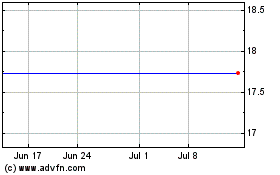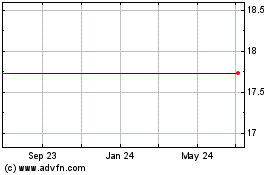By Kirsten Grind
Bosses are turning to a new way of convincing employees to save
more: make them do it.
Companies from Apache Corp. to Google Inc. to Credit Suisse
Group AG have boosted the percentage of worker paychecks
automatically diverted to 401(k) plans well above the long-held
standard of 3%.
Some are setting aside as much as 10% of their workers' money or
automatically increasing the amounts by 1% a year unless employees
opt out. But not all are matching the increased savings with
company contributions.
The moves are the latest attempt by companies to transfer the
burden of retirement costs to workers. Millions of Americans aren't
putting enough money aside, despite reforms designed to bulk up
nest eggs and encourage employees to sock away more.
There are incentives for companies to urge more-aggressive
savings. They want to ensure they can make room for younger
employees and aren't left with an aging workforce that doesn't have
enough money "to retire and move on," said Douglas Fisher, Fidelity
Investments' head of policy development on workplace
retirement.
Houston oil producer Apache was among the companies to test out
higher rates. It boosted its automatic employee contribution to 8%
in 2012 as it tried to attract new workers. Its 401(k) costs have
increased by between $4 million and $5 million annually as Apache
matched the full amount for employees, executives say, but roughly
97% of its employees now participate.
"If I put in less than 8%, I'm throwing money away," said Chris
Lurix, a 44-year-old Apache systems analyst in Houston, who cited
the company's willingness to match the higher savings rate as a
partial reason why he took a job there three years ago.
About 40% of working households with those aged between 25 and
64 have no retirement savings, according to a study released last
spring by the nonprofit National Institute on Retirement Security.
For those that do, the median balance for households with workers
approaching retirement age is $104,000, a rate that experts say is
one-fifth of an ideal balance, based on a retirement age of 67.
"The typical American household has almost nothing saved for
retirement, " said Nari Rhee, manager of the retirement-security
program at the Institute for Research on Labor and Employment.
Many employers in recent decades shed costly retirement
obligations by eliminating traditional pensions that guarantee a
set payout for life and replacing them with tax-deferred 401(k)
plans where employees are largely responsible for saving and
investment choices.
Millions of new savers joined 401(k) plans but companies
enrolled most participants at a 3% savings rate, partly because of
guidance from the Internal Revenue Service in 1998. Companies were
long reluctant to take a bigger chunk out of paychecks for fear of
stirring employees' ire or taking on higher costs if they matched
the larger contributions.
Companies softened that stance as they recovered from the 2008
financial crisis and looked to attract new workers. Large money
managers also lobbied employers to be more aggressive.
The number of plans with contribution rates above the old
default rate climbed to 40% for the first time in 2013, according
to the latest data available from the Plan Sponsor Council of
America, compared with 23% in 2006. More are currently discussing
moves higher, according to industry consultants and money
managers.
Google began boosting its automatic savings rate in its 401(k)
plan from 4% in 2008 to 6% in 2010, according to retirement
researcher BrightScope Inc.. It now enrolls employees at 10%. John
Casey, Google's director of international benefits, said in a
statement that the company wants "Googlers saving for the long-term
so they can have the retirements they want."
Fidelity, Vanguard Group and other large money managers also
benefit by collecting more fees on assets under management.
Fidelity manages accounts for 13 million 401(k) investors across
21,000 plans, and Vanguard manages retirement accounts for 3.6
million people and 1,900 plans.
Companies that have bumped up the default savings rate say
they've been surprised by the lack of pushback from employees, who
are free to lower their savings rate or opt out of the automatic
increases.
Credit Suisse braced for complaints last year when it upped its
initial automatic savings rate for new employees to 9% from 6%. It
did so after years of experiencing lackluster interest from the
firm's roughly 8,500 employees in the U.S. when meeting to discuss
increasing retirement savings, said Joseph Huber, chairman of the
bank's pension-investment committee.
But Mr. Huber said the bank heard concerns from only two people,
who weren't previously putting any money into their 401(k) plans.
Credit Suisse also decided to automatically increase the default
rate by 1% a year until an employee reaches 15%. It doesn't match
contributions up to the highest rate.
"It's companies' biggest fear and it was radio silence," he
said.
Jeffrey Barnett, a 24-year-old clinical research assistant at
Ohio State University who makes about $28,000 a year, said some of
his co-workers grumbled at the university's 10% default savings
rate. But it doesn't bother him.
"It has definitely put employees in a good position, whether or
not they feel that way from the start," Mr. Barnett said.
Write to Kirsten Grind at kirsten.grind@wsj.com
Subscribe to WSJ: http://online.wsj.com?mod=djnwires
(END) Dow Jones Newswires
October 15, 2015 05:44 ET (09:44 GMT)
Copyright (c) 2015 Dow Jones & Company, Inc.
Apache (NYSE:APA)
Historical Stock Chart
From Mar 2024 to Apr 2024

Apache (NYSE:APA)
Historical Stock Chart
From Apr 2023 to Apr 2024
